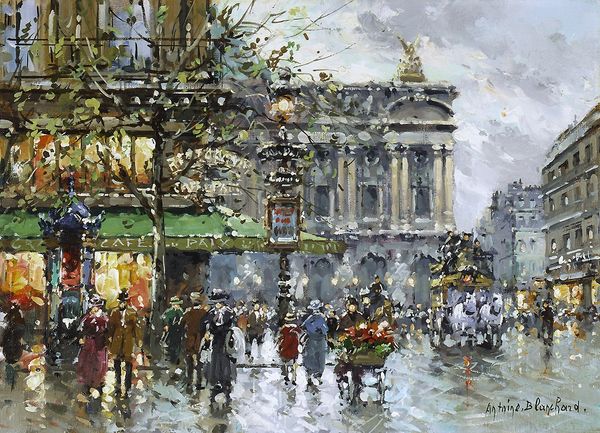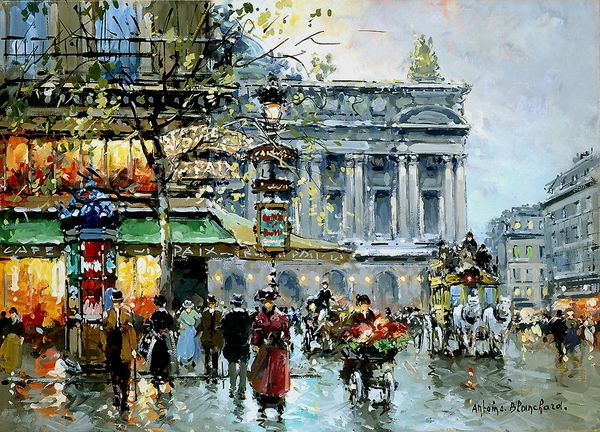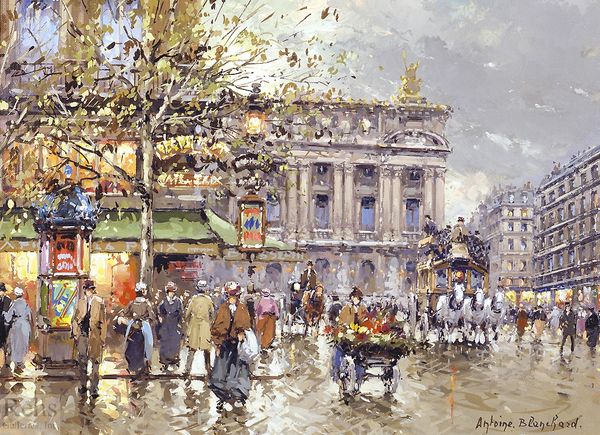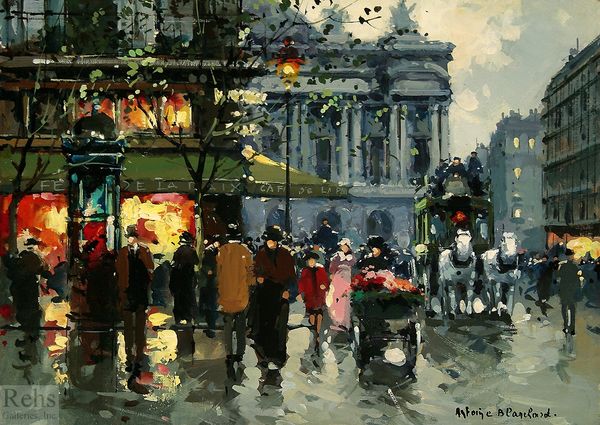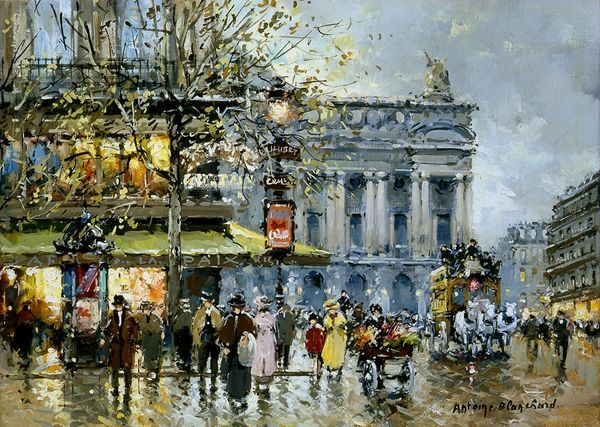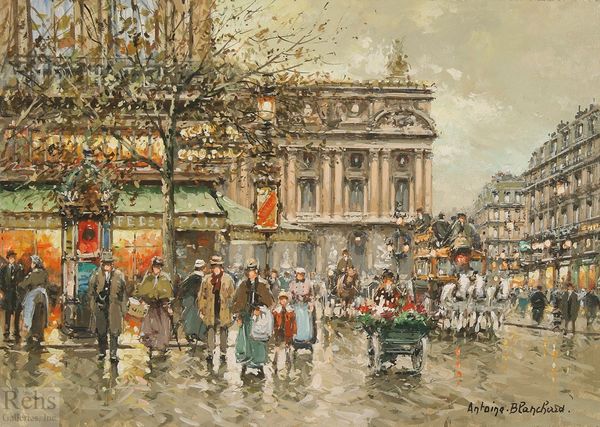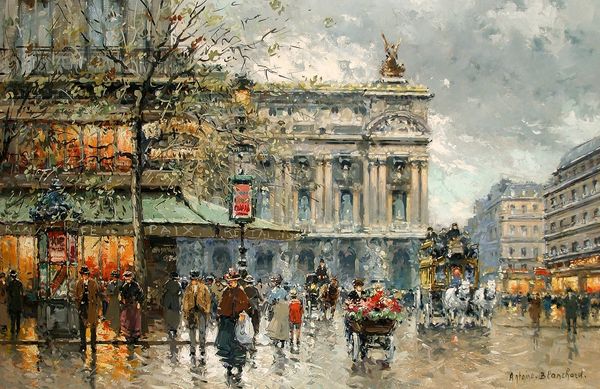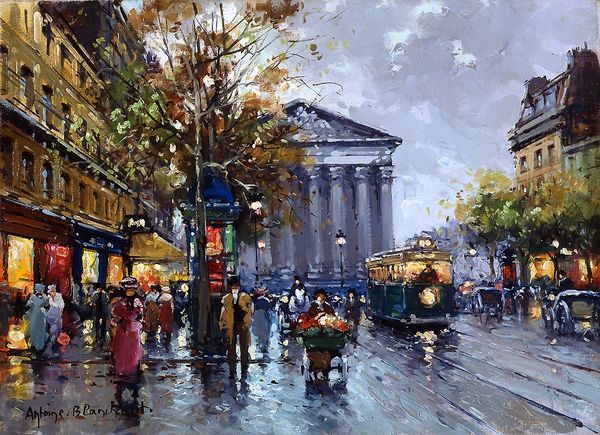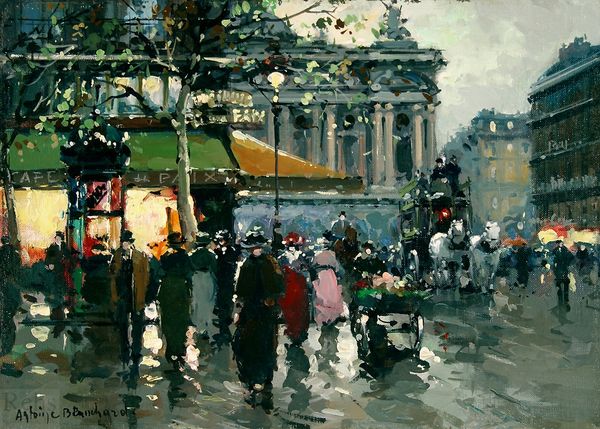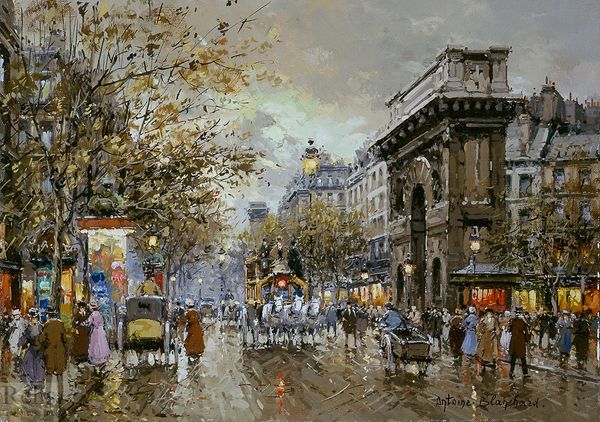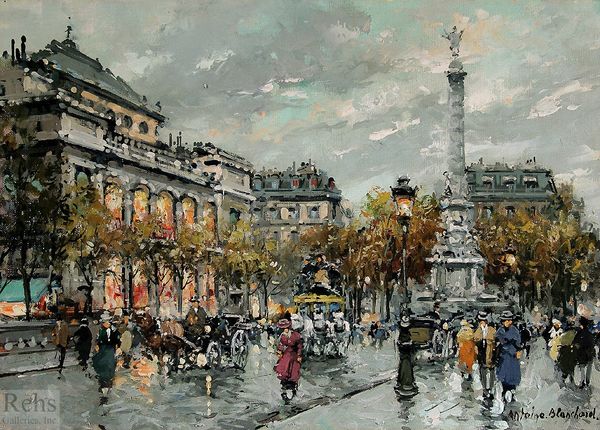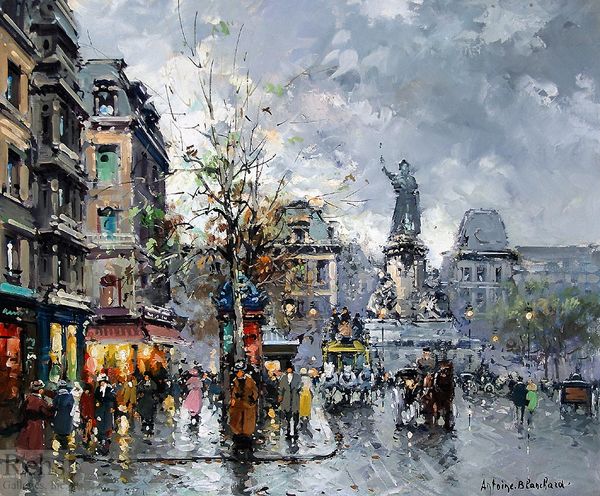
painting, plein-air, oil-paint, impasto
#
portrait
#
urban landscape
#
street-art
#
flâneur
#
painting
#
impressionism
#
plein-air
#
oil-paint
#
landscape
#
impasto
#
orientalism
#
cityscape
#
genre-painting
#
modernism
Copyright: Antoine Blanchard,Fair Use
Curator: This painting captures a slice of Parisian life. The artist, Antoine Blanchard, entitled it "Opera, Café de la Paix." Editor: It feels slick. Not just the rain on the street, but the way the paint’s applied. Thick strokes, juicy almost, giving it that late 19th, early 20th century feel. A modern scene rendered with classical oil paint. Curator: Blanchard, while working in the 20th century, revisited these Belle Époque scenes quite often, essentially recreating postcard views. Think about the socio-political context: these weren't just images; they were marketed symbols of Parisian charm, aimed at tourists and those nostalgic for a supposedly better era. Editor: Postcards meant for mass consumption. And consider the labor that goes into creating these idealized visions – the mining of pigments, the refining of oils, the artist's repetitive gestures to recreate a marketable commodity, all concealing the process under this pleasing vista. Look closely at the carriage wheel or building edge: its the impasto that truly carries the work! Curator: Exactly. It’s easy to overlook the underlying complexities when seduced by the image. The painting serves as an artifact of its time – both in its subject matter and its commodification as a piece of art. It also catered to the taste of a burgeoning middle class keen to express its status. Editor: The thick impasto highlights the materiality of the work, how oil paints build up on the canvas, yet simultaneously recreates the bustling Parisian avenues! Blanchard emphasizes not only the visual splendor but also all the unseen materials of his profession: canvas, linseed oil, and of course, powdered pigment. The carriage isn’t made from anything other than more paint! Curator: And how was this image received? Likely hung in homes, in galleries reinforcing an image of Paris as the city of light and elegance, masking the complex realities beneath its surface. A constant negotiation between the romantic ideal and urban modernization. Editor: It leaves me wondering about Blanchard’s position too. Was he a craftsman, churning out pretty images? Or did he recognize this inherent tension and reflect it through his meticulous labor? Regardless, it offers a tantalizing material window into a world and time!
Comments
No comments
Be the first to comment and join the conversation on the ultimate creative platform.
